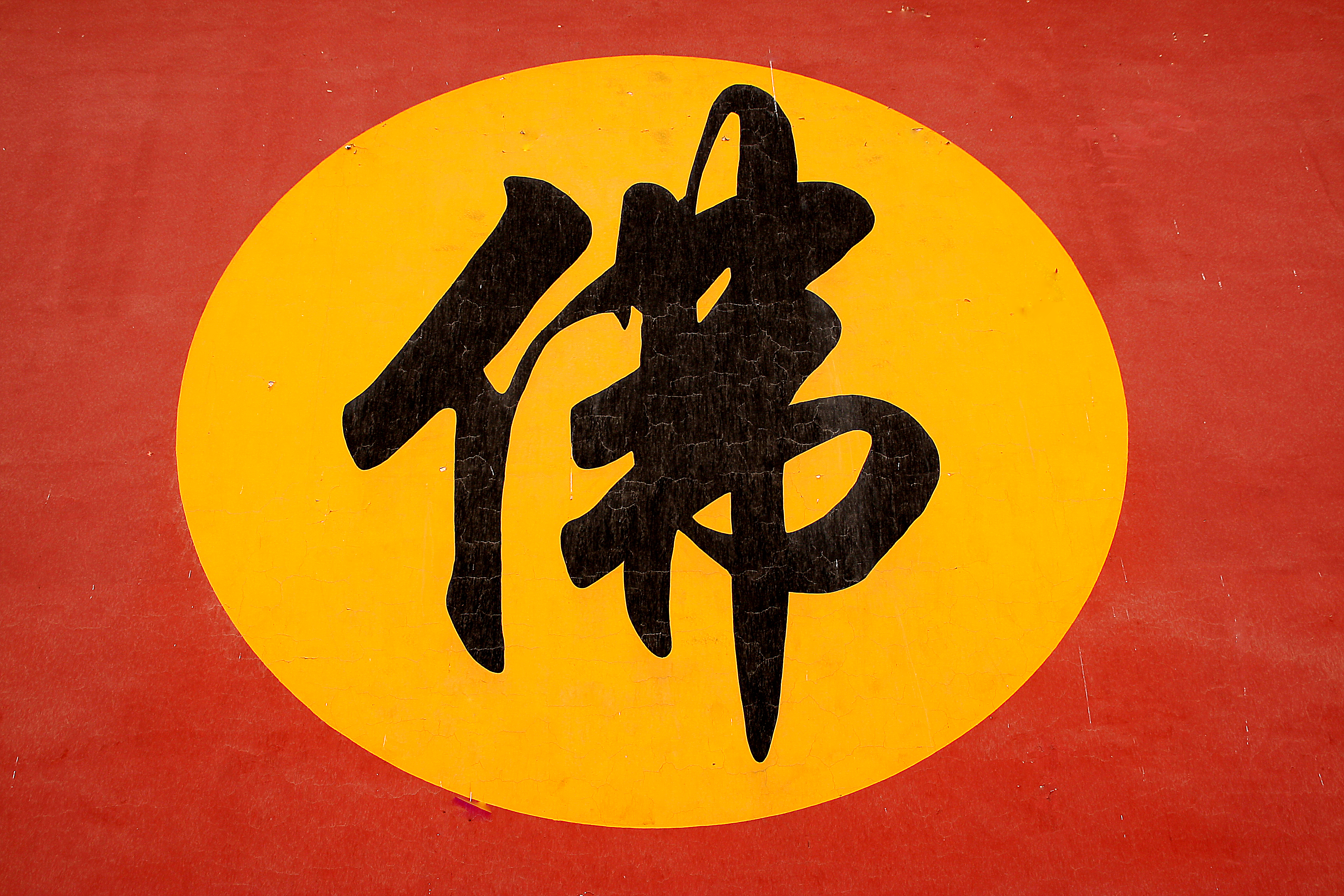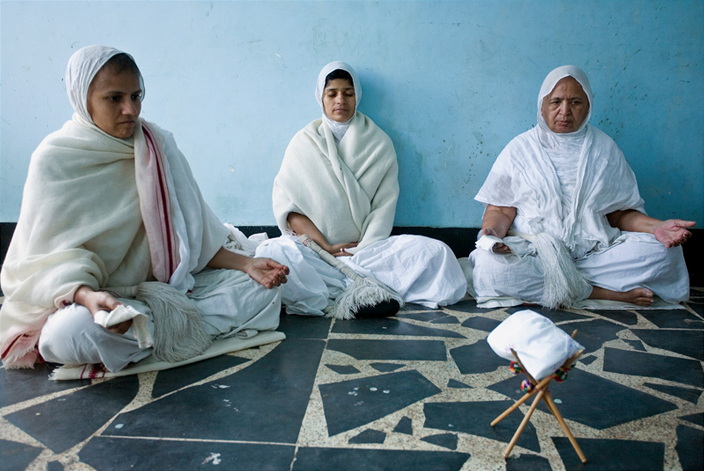|
Sanjiejiao
The Sanjiejiao ( "Three degrees religion") or Pufazong ( "Popular faith religion") was a religious movement based on the teachings of the Chan Buddhist monk Xinxing (, 540-594). Teachings Xinxing taught that in the last of the Three Ages of Buddhism, Buddhists must learn all the Buddhist teachings. He taught tapas (ascetic practices), begging for food, eating only one meal daily, worshiping all living things as Buddhas based on the doctrine of the Buddha-nature, building public charity "treasure houses" () for monastics and laypeople alike, and sky burial upon death. History Based in Hua Du monastery (化度寺) in Chang'an, the movement was very popular in 600-700 CE. The monks lived in the Sanjiejiao house, or Sanjieyuan (三階院) inside Buddhist monasteries and built endless treasure houses. Its practices faced heavy criticism from many Buddhists and restriction by Buddhist Emperor Wen of Sui and Wu Zetian as unorthodox teachings. Emperor Xuanzong of Tang ordered the destructi ... [...More Info...] [...Related Items...] OR: [Wikipedia] [Google] [Baidu] |
Three Ages Of Buddhism
The Three Ages of Buddhism, also known as the Three Ages of the Dharma (), are three divisions of time following Shakyamuni Buddha's death and passing into Nirvana in East Asian Buddhism. Three Ages The Three Ages of Buddhism are three divisions of time following Buddha's passing: # Former Day of the Dharma — also known as the “Age of the Right Dharma” (; Japanese: shōbō), the first thousand years (or 500 years) during which the Buddha's disciples are able to uphold the Buddha's teachings; # Middle Day of the Dharma — also known as the “Age of Semblance Dharma” (; Japanese: zōhō), the second thousand years (or 500 years), which only resembles the right Dharma; # Latter Day of the Dharma — also known as “the Degenerate Age of Dharma” (; Japanese: mappō), which is to last for 10,000 years during which the Dharma declines. In the Sutra of the Great Assembly (Sanskrit: ''Maha-Samnipata Sutra''; Japanese: ''Daijuku-kyō''), the three periods are further di ... [...More Info...] [...Related Items...] OR: [Wikipedia] [Google] [Baidu] |
Chan Buddhism
Chan (; of ), from Sanskrit '' dhyāna'' (meaning "meditation" or "meditative state"), is a Chinese school of Mahāyāna Buddhism. It developed in China from the 6th century CE onwards, becoming especially popular during the Tang and Song dynasties. Chan is the originating tradition of Zen Buddhism (the Japanese pronunciation of the same character, which is the most commonly used English name for the school). Chan Buddhism spread from China south to Vietnam as Thiền and north to Korea as Seon, and, in the 13th century, east to Japan as Japanese Zen. History The historical records required for a complete, accurate account of early Chan history no longer exist. Periodisation The history of Chan in China can be divided into several periods. Zen, as we know it today, is the result of a long history, with many changes and contingent factors. Each period had different types of Zen, some of which remained influential while others vanished. Ferguson distinguishes three ... [...More Info...] [...Related Items...] OR: [Wikipedia] [Google] [Baidu] |
Tapas (Indian Religions)
Tapas (Sanskrit: तपस्) is a variety of austere spiritual meditation practices in Indian religions. In Jainism, it means asceticism (austerities, body mortification); in Buddhism, it denotes spiritual practices including meditation and self-discipline; and in the different traditions within Hinduism it means a spectrum of practices ranging from asceticism, inner cleansing to self-discipline by meditation practices. The ''Tapas'' practice often involves solitude, and is a part of monastic practices that are believed to be a means to moksha (liberation, salvation). In the Vedas literature of Hinduism, fusion words based on ''tapas'' are widely used to expound several spiritual concepts that develop through heat or inner energy, such as meditation, any process to reach special observations and insights, the spiritual ecstasy of a yogin or ''Tāpasa'' (a vṛddhi derivative meaning "a practitioner of austerities, an ascetic"), even warmth of sexual intimacy.Kaelber, W. O. (19 ... [...More Info...] [...Related Items...] OR: [Wikipedia] [Google] [Baidu] |
Buddha-nature
Buddha-nature refers to several related Mahayana Buddhist terms, including '' tathata'' ("suchness") but most notably ''tathāgatagarbha'' and ''buddhadhātu''. ''Tathāgatagarbha'' means "the womb" or "embryo" (''garbha'') of the "thus-gone" ('' tathāgata''), or "containing a ''tathāgata''", while ''buddhadhātu'' literally means "Buddha-realm" or "Buddha-substrate". Buddha-nature has a wide range of (sometimes conflicting) meanings in Indian and later East Asian and Tibetan Buddhist literature. Broadly speaking, the terms refer to the potential for all sentient beings to be a Buddha, since the luminous mind, "the natural and true state of the mind," the pure (''visuddhi'') mind undefiled by kleshas, is inherently present in every sentient being. It will shine forth when it is cleansed of the defilements, c.q. when the nature of mind is recognised for what it is. The '' Mahāyāna Mahāparinirvāṇa Sūtra'' (written 2nd century CE), which was very influential in ... [...More Info...] [...Related Items...] OR: [Wikipedia] [Google] [Baidu] |
Bhikkhu
A ''bhikkhu'' (Pali: भिक्खु, Sanskrit: भिक्षु, ''bhikṣu'') is an ordained male in Buddhist monasticism. Male and female monastics (" nun", '' bhikkhunī'', Sanskrit ''bhikṣuṇī'') are members of the Sangha (Buddhist community). The lives of all Buddhist monastics are governed by a set of rules called the prātimokṣa or pātimokkha. Their lifestyles are shaped to support their spiritual practice: to live a simple and meditative life and attain nirvana. A person under the age of 20 cannot be ordained as a bhikkhu or bhikkhuni but can be ordained as a śrāmaṇera or śrāmaṇērī. Definition ''Bhikkhu'' literally means " beggar" or "one who lives by alms". The historical Buddha, Prince Siddhartha, having abandoned a life of pleasure and status, lived as an alms mendicant as part of his śramaṇa lifestyle. Those of his more serious students who renounced their lives as householders and came to study full-time under his supervision als ... [...More Info...] [...Related Items...] OR: [Wikipedia] [Google] [Baidu] |
Sky Burial
Sky burial (, "bird-scattered") is a funeral practice in which a human corpse is placed on a mountaintop to decompose while exposed to the elements or to be eaten by scavenging animals, especially carrion birds. It is a specific type of the general practice of excarnation. It is practiced in the Chinese provinces and autonomous regions of Tibet, Qinghai, Sichuan, and Inner Mongolia, as well as in Mongolia, Bhutan, and parts of India such as Sikkim and Zanskar. The locations of preparation and sky burial are understood in the Vajrayana Buddhist traditions as charnel grounds. Comparable practices are part of Zoroastrian burial rites where deceased are exposed to the elements and scavenger birds on stone structures called Dakhma. Few such places remain operational today due to religious marginalisation, urbanisation and the decimation of vulture populations. The majority of Tibetan people and many Mongols adhere to Vajrayana Buddhism, which teaches the transmigrati ... [...More Info...] [...Related Items...] OR: [Wikipedia] [Google] [Baidu] |
Chang'an
Chang'an (; ) is the traditional name of Xi'an. The site had been settled since Neolithic times, during which the Yangshao culture was established in Banpo, in the city's suburbs. Furthermore, in the northern vicinity of modern Xi'an, Qin Shi Huang of the Qin dynasty, China's first emperor, held his imperial court, and constructed his massive mausoleum guarded by the Terracotta Army. From its capital at Xianyang, the Qin dynasty ruled a larger area than either of the preceding dynasties. The imperial city of Chang'an during the Han dynasty was located northwest of today's Xi'an. During the Tang dynasty, the area that came to be known as Chang'an included the area inside the Ming Xi'an fortification, plus some small areas to its east and west, and a substantial part of its southern suburbs. Thus, Tang Chang'an was eight times the size of the Ming Xi'an, which was reconstructed upon the site of the former imperial quarters of the Sui and Tang city. During its heyday, Chang ... [...More Info...] [...Related Items...] OR: [Wikipedia] [Google] [Baidu] |
Emperor Wen Of Sui
The Emperor Wen of Sui (; 21 July 541 – 13 August 604), personal name Yang Jian (), Xianbei name Puliuru Jian (), alias Narayana () deriving from Buddhist terms, was the founder and the first emperor of the Chinese Sui dynasty. The '' Book of Sui'' records him as having withdrawn his favour from the Confucians, giving it to "the group advocating Xing-Ming and authoritarian government." As a Buddhist, he encouraged the spread of Buddhism through the state. He is regarded as one of the most important emperors in Chinese history, reunifying China proper in 589 after centuries of division since the independence of the Cheng Han and Han Zhao dynasties from the Western Jin dynasty in 304. During his reign, the construction of the Grand Canal began. As a Northern Zhou official, Yang Jian served with apparent distinction during the reigns of the Emperor Wu of Northern Zhou and Emperor Xuan of Northern Zhou. When the erratic Emperor Xuan died in 580, Yang, as his father-in- ... [...More Info...] [...Related Items...] OR: [Wikipedia] [Google] [Baidu] |
Wu Zetian
Wu Zetian (17 February 624 – 16 December 705), personal name Wu Zhao, was the ''de facto'' ruler of the Tang dynasty from 665 to 705, ruling first through others and then (from 690) in her own right. From 665 to 690, she was first List of Chinese consorts, empress consort of the Tang dynasty (as wife of the Emperor Gaozong of Tang, Emperor Gaozong) and then, after his death, List of Chinese consorts, empress dowager (ruling through her sons Emperors Emperor Zhongzong of Tang, Zhongzong and Emperor Ruizong of Tang, Ruizong). Unprecedented in Chinese history, she subsequently founded and ruled as empress regnant of the Zhou dynasty (690–705), Wu Zhou dynasty of China from 690 to 705. She was the only female Chinese sovereign, sovereign in the history of China widely regarded as legitimate. Under her 40-year reign, China grew larger, becoming one of the great powers of the world, its culture and economy were revitalized, and corruption in the court was reduced. She was remov ... [...More Info...] [...Related Items...] OR: [Wikipedia] [Google] [Baidu] |
Emperor Xuanzong Of Tang
Emperor Xuanzong of Tang (; 8 September 685 – 3 May 762), personal name Li Longji, was the seventh emperor of the Tang dynasty in China, reigning from 712 to 756 CE. His reign of 44 years was the longest during the Tang dynasty. In the early half of his reign he was a diligent and astute ruler. Ably assisted by capable chancellors like Yao Chong, Song Jing and Zhang Yue, he was credited with bringing the Tang dynasty to a pinnacle of culture and power. Emperor Xuanzong, however, because of his interest in his two beloved concubines who were involved in governmental matters ( Consort Wu and later with her death; was succeeded by Yang Guifei) and was blamed for over-trusting Li Linfu, Yang Guozhong and An Lushan during his late reign, with Tang's golden age ending in the An Lushan Rebellion. Background Li Longji was born at the Tang dynasty eastern capital Luoyang in 685, during the first reign of his father Emperor Ruizong (Li Dan) – but at that time, Emperor R ... [...More Info...] [...Related Items...] OR: [Wikipedia] [Google] [Baidu] |




.jpg)

.jpg)